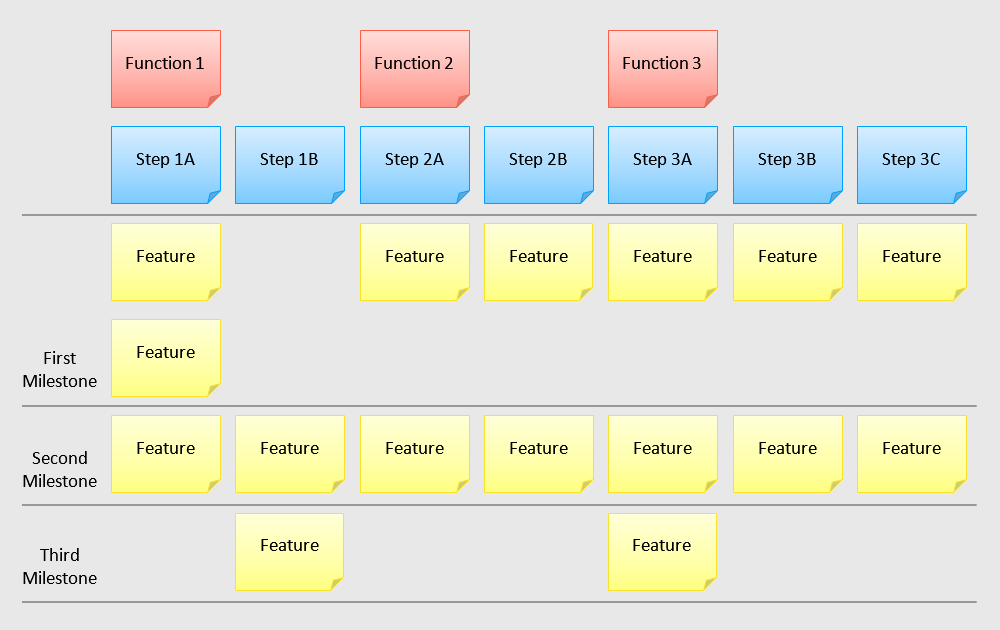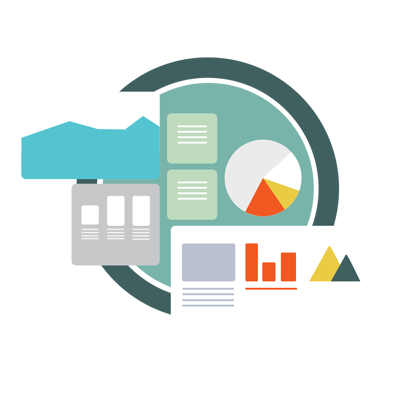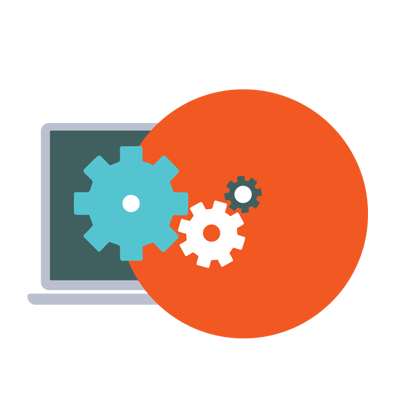
Not your case? See other lean startup methodology phases
You have validated your idea, you have a clear product concept or possibly an early prototype, and there is budget for development. This is an exciting place to be and it comes with a new set of challenges! What does the Lean Startup Methodology suggest in this case?
The focus shifts towards implementation. How can you best translate the concept into the desired features and look & feel of a working product? How do you communicate with engineers so that things don't fall through the cracks? How do you stay connected to the big picture while diving into the nitty-gritty? How do get maximum results with minimal resources?

This phase builds shared understanding of what the product is (and what is not). Starting point is the business functions that the product will perform, ideally delivered through a Product Vision Board. These functions are expanded into product features and prioritized into an initial roadmap that ensures important stuff is done first. (Sounds obvious but unfortunately it is quite uncommon).
Phase 1 delivers a clear description of what the product will do. This can become the basis for defining and executing validation experiments, and ultimately for creating your MVP feature set. This is also the time to make an initial assessment regarding product architecture and technology selection, and to get a rough budget estimate for development.
Emerging Humanity is using simple but effective tools in order to distill the broader product idea into detailed product features. These tools can bridge the gap between business and engineering and turn the product vision into tangible product definition. They are mentioned here as a quick reference.



Phase 2 complements the text-heavy Product Definition (Phase 1) with necessary visual information (layouts, flows etc). This delivers a clear picture of how the product (MVP and subsequent versions) will look & behave and it allows sign-off by both the business and engineering teams. You are ready for development!

In this phase the process moves to engineering. Technical decisions about the architecture are getting finalized, the developer team is put together per the required skillsets, and the product is getting developed. This phase also includes deployment of the product and all related DevOps activities.
Phase 3 includes:
Emerging Humanity advocates Agile product development per the Lean Startup Methodology. The phases mentioned above build on top of each other, but the overall process is not sequential; there is some initial bulk work needed to define the MVP and the product roadmap (Phase 1), but development then progresses in iterations, each one including a bit of all three phases. If the groundwork is done properly, this approach maximizes ROI of the development effort.
In addition, the iterative process can be combined with milestones for conducting market experiments and validating implementation of both the MVP and ongoing product features. This delivers invaluable feedback on the product, allows early course adjustments, and helps get a more valuable product faster to market.
At Emerging Humanity we believe that a good methodology is useful in general and invaluable when problems arise. To get out of trouble, it helps to know how you got there in the first place. Following a process allows you to learn from other people's mistakes; to trace your steps, backtrack, and try something different. You are still fumbling around to some extent (it IS a startup after all), but in a systematic and intentional way that guarantees you take your best shot possible!
Emerging Humanity's approach follows a step-by-step process that aligns Lean Startup Methodology and industry standard tools with your startup's needs. It creates a clear execution path. All you have to do is to walk it!
We Help Visionary Tech Entrepreneurs Build Impactful Companies!